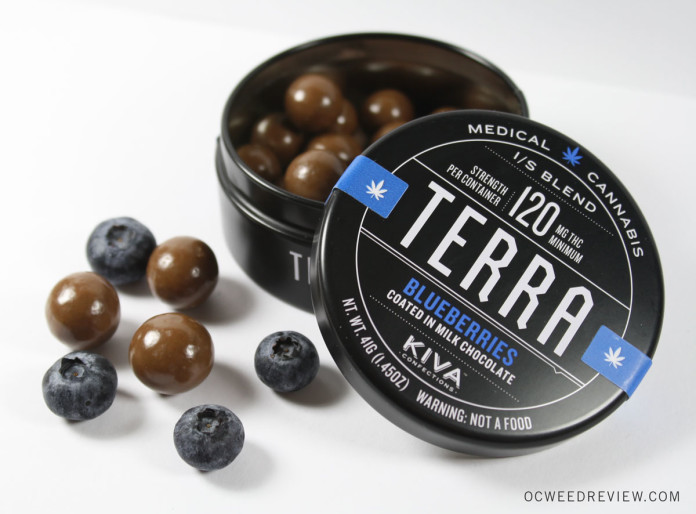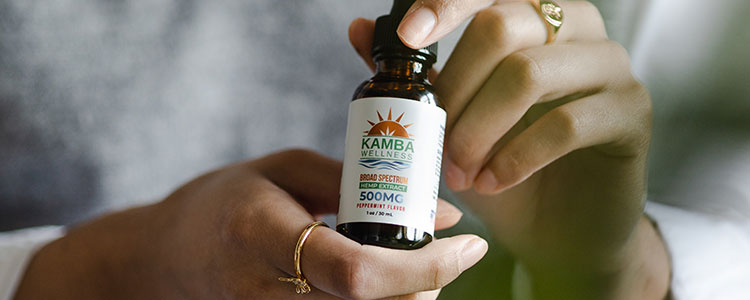In This Article
- What is Microdosing?
- What are the Benefits of Microdosing THC?
- Stress relief
- Better sleep
- Pain relief
- Other Advantages of Microdosing
- Are There Any Adverse Effects of Microdosing THC?
- Can users suffer from cannabis withdrawal symptoms?
- When should you see a doctor?
- How to Microdose THC
- How to Microdose When Smoking
- How to Microdose When Vaping
- How to Microdose Edibles
- How to Microdose Tinctures
- How to Microdose Tablets or Capsules
- Can I start microdosing immediately? Or should I gradually lower my dose?
- Can I microdose CBD?
- How frequently can I microdose?
- Are microdoses detectable by drug tests?
- Resources
It’s no secret that cannabis offers numerous potential benefits, many of which derive from the THC within the plant. As cannabis grows in popularity, plenty of people are looking to reap those benefits – minus the intoxication. Fortunately, microdosing THC may be the ideal solution.
As the market sees more high-THC products, it builds a hurdle for new or less experienced users. The dosing suggestions may be too potent for some, causing unwanted negative side effects like anxiety and paranoia.
Microdosing allows patients to treat their conditions with the same potent cannabinoids that cause the plant's trademark euphoric sensations while avoiding the intoxication and many of the unpleasant side effects. This often-overlooked method of cannabis consumption offers an exciting option for new patients and daily use.
What is Microdosing?
Microdosing is a method of dosing where a person consumes a fraction of a (typically non-intoxicating) substance’s traditional dosage. Put simply, microdosing is consuming small amounts of a substance for therapeutic or recreational purposes.1 These microdoses are often too small to produce any intoxicating effects, but they may provide other desirable outcomes. It’s these other benefits that make microdosing so appealing.
In the cannabis world, users typically either microdose THC or CBD. Medical patients typically focus on THC microdosing.
The average serving size to start microdosing THC is around 2.5 milligrams or even less. Everyone is different, so your microdose may be higher or lower. It all depends on the user, including the condition being treated by microdosing weed, tolerance level, consumption method, and various other factors.
What are the Benefits of Microdosing THC?
Preliminary studies and anecdotal evidence point to promising benefits of THC microdosing.
Stress relief
Researchers at the University of Chicago reported the effects of low THC levels. The results stated that extremely low doses of THC lessened the anxiety caused by a public speaking task.
Meanwhile, higher doses which produced a mild high, also increased anxiety. The broader conclusion to be drawn here is that microdosing THC may be a key to experiencing stress relief from cannabis.
Better sleep
In a study published in the Canadian Pharmacists Journal, researchers observed cannabis use in patients with insomnia and sleep disorders.
71% of patients using cannabis products for sleep reported a subjective improvement in sleep. Of those, 39% were able to discontinue or reduce prescription therapy to keep microdosing THC instead.2
For some patients, the higher concentration of THC causing intoxication was described as an adverse effect. The solution was to lower the dose to a microdose level.
Pain relief
Microdosing weed may ease neuropathic and/or chronic pain in some individuals. In 2020, the European Journal of Pain published a study demonstrating that precise, low-THC doses provide significant pain reduction with zero cognitive performance impairment.3
Other Advantages of Microdosing
Avoiding most of the common drawbacks of cannabis use is the other primary benefit of microdosing. For example, it’s a viable solution for users looking to lower their weed tolerance. Microdosing is gaining popularity with cannabis consumers who frequently feel overwhelmed after traditional consumption methods.
When you microdose THC, you can achieve the desired effects without feeling overly sedated or tired. Microdosing also helps eliminate those weed hangovers some people feel the next day from overconsumption.
Are There Any Adverse Effects of Microdosing THC?
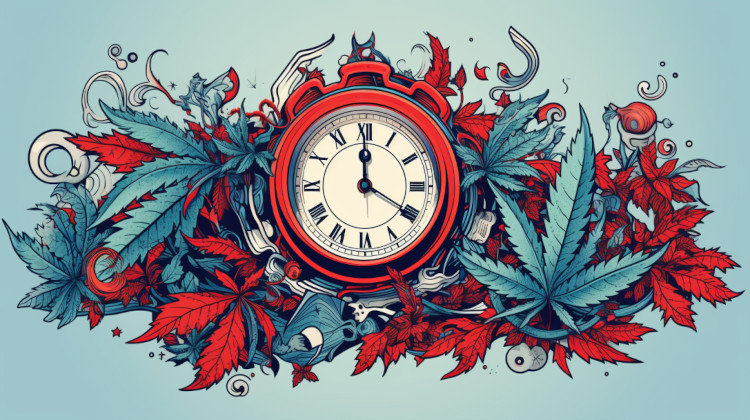
The chances of adverse reactions are indeed less likely while microdosing. However, a pleasant experience isn't guaranteed, as with any drug or substance.
Regardless of their dose size, some people may still experience unpleasant side effects. These may include but aren’t limited to:
- Impaired cognitive function
- Dizziness
- Anxiety
Dialing in the exact dose may pose a challenge at first. While 2.5 mg might be perfect for some people, it still might overwhelm others or be too little to receive any benefit.
As it’s subjective, the best course of action is to start small and gradually increase the dose as needed. While there may be a period where you feel no effects, it’ll reduce the likelihood of an adverse reaction. Then, you can gradually find your ideal microdose.
Can users suffer from cannabis withdrawal symptoms?
In some cases, excessive cannabis users may develop a psychological dependence on the drug and experience cannabis withdrawal without it. While nowhere near as severe or debilitating as other substance withdrawal, detoxing from weed is still a process.
Fortunately, while the concept of cannabis dependence exists, few who use it will ever develop an outright addiction. Microdosing may help further eliminate the risk of dependence with conservative, low-dose amounts of THC per serving.
When should you see a doctor?
Always get medical advice before starting a new treatment, including microdosing THC. Side with caution, especially if you experience adverse effects, and reach out to a medical health professional if you're concerned with any reaction to cannabis.
How to Microdose THC
A typical THC microdose is between 2.5 or fewer milligrams. However, microdosing can look different depending on the preferred consumption method.
The best way to consume cannabis is subjective. Products like THC inhalers provide a precise, low-dose format to consume easily. As those aren’t available to everyone, the tips below can help you explore the best method for you.
How to Microdose When Smoking

Microdosing weed when smoking is possible, though it can take some practice. There are several ways to smoke cannabis, and the conventional methods typically utilize either joints or bowls. Fortunately, both of these methods work well for microdosing cannabis.
The key is to take smaller puffs, or ‘hits,’ to inhale less THC at a time when microdosing cannabis. One inhale is generally the equivalent of consuming 2.5 milligrams of THC, serving as a perfect microdose. However, cannabis strains come in various potencies, so that range may vary. Plus, there are numerous other factors to consider, like how the person inhales and the amount of THC actually absorbed by the body, so finding the right dose really is an individual process.
Here’s a quick microdose smoking formula to help you calculate your dosage size:
- Determine the weight of the joint, pre-roll, or bowl. Joints typically weigh ½ a gram to a gram. Weigh your flower with a scale before packing it.
If the weight of the joint is 1 gram and the flower has 18.7% THC, you will have 187mg of THC in that joint. The same goes for packing a bowl; if you use 1 ⁄ 4 of a gram, you would divide 187mg by 4, for a total of 46.75mg of THC in the bowl. - You can then divide the total mg of THC by the total number of puffs in your pre-roll/bowl. This will be unique to the individual and size of each inhale and more of a rough estimate. That equals your total milligrams of THC per puff.
(total mg THC in pre-roll or bowl) ÷ (total puffs in pre-roll or bowl) = mg of THC in each puff
Using this formula, you can figure out how much to safely smoke.
How to Microdose When Vaping
If you’re trying to decide between vaping and smoking, microdosing cannabis is possible with both. The proper THC microdosing amount for vaping is similar to that of smoking. You can even use the same formula if you substitute the total weight of the vape cartridge for the weight of the joint. Of course, the calculations here are rougher, considering the weight of the cartridge itself.
Example Calculation
Let’s say you pick up a one-gram vape cart with 80% THC (the average is 70% to 90%). That means the cart contains 800 mg THC (80% multiplied by one gram by weight).
800mg THC divided by approximately 200 puffs per cart equals around 4mg THC per puff. Since microdosing cannabis suggests a starting serving size of 2.5 THC, you’re close, but you might want to lower the dose slightly. Keep in mind that the total puffs per cart will depend on the individual consumer and their device settings.
How to Microdose Edibles
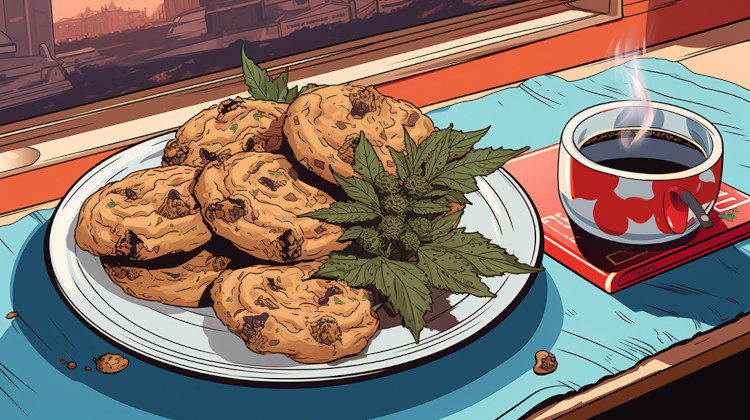
There’s a lot to love about microdosing edibles. Microdosing is a convenient, discreet way to consume cannabis that helps people use edibles more responsibly. Likewise, because edible dosages are clearly labeled, it’s easier to control THC intake with edibles than with other methods.
Microdosing with edibles is a simple matter of purchasing the right product. Alternatively, you may cut your favorite edible into smaller pieces if you prefer. For example, many users like gummies for the convenience and ease they provide.
If you're making your own edibles, use a dosage calculator to get your homemade edibles to the exact right level of THC. Granted, there's always going to be some variation with homemade edibles, but a calculator will give you an excellent idea of what you're working with.
Note that edibles often have a slower onset time than smoking or vaping. The effects may also last longer since the THC metabolizes through the liver. Some edibles take 2 to 3 hours to kick in, and effects last 12 hours or longer for certain consumers.
For these reasons, we recommend you start low and wait at least two full hours before trying more. In some cases, users might even wait until the next day before adding more.
How to Microdose Tinctures
Tinctures are a mixture of cannabis extracts and either oil or alcohol. They’re typically made by extracting THC and/or other cannabinoids from the plant using some type of solvent. That extract is then mixed with an oil, like MCT coconut oil or pure alcohol. Cannabis consumers take tinctures orally or under the tongue, add them to food and beverages, and use them in topicals.
Tinctures offer fairly precise dosing. Taking a tincture sublingually (under the tongue) allows them to feel the effects, typically within 15 to 30 minutes. The THC is absorbed directly into the bloodstream, with small amounts likely passing through the liver in the digestive system. This quicker absorption rate gives tinctures an upper edge compared to other types of cannabis consumables.
Most tinctures are sold with a measured dropper that allows consumers to get small, precise amounts of THC per serving. To calculate a microdose amount, use the following formula:
- Start with the total milligram count per tincture. Let’s say you have a 1,000mg THC tincture for the purpose of this calculation example.
- Divide the total THC count by the total number of milliliters (mL) per bottle. A tincture bottle typically contains 30 mL. Since a dropper generally holds 1 mL, there are usually 30 full droppers per bottle. 1 mL contains approximately 33.3 mg THC per 1,000mg THC tincture.
- Divide that number by the total number of drops per dropper. Depending on the tincture, there are anywhere from 20 to 30 drops per dropper. You’re left with the number of THC milligrams per drop. For a 1,000mg THC oil bottle, that’s 1.1 to 1.6 milligrams of THC per drop. You can calculate your ideal microdose size from there.
How to Microdose Tablets or Capsules
Last but not least, tablets, capsules, and THC pills are a great way to microdose THC. They provide accurate dosages, they’re convenient and discreet, and they provide an alternative to smoking without the same health risks.
The downside is that tablets and capsules can’t often be cut like chocolates and gummies. Cannabis users must commit to the dosage they’re consuming. Therefore, if you're choosing capsules, you’ll need to find a low enough dosage per capsule for a microdose.
- Take the capsules on an empty stomach if you want a faster onset time. Food can delay the effects.
- Start low and go slow. Try to start with the lowest dosage size possible.
- Swallow the tablet with water and wait two hours for it to take full effect.
- Wait. If you don’t reach the desired effects, try again with a new or higher dosage the next day – at least 24 hours.
- Effects can last five or more hours, so clear your calendar, especially if you’re unsure about the serving size’s intensity.
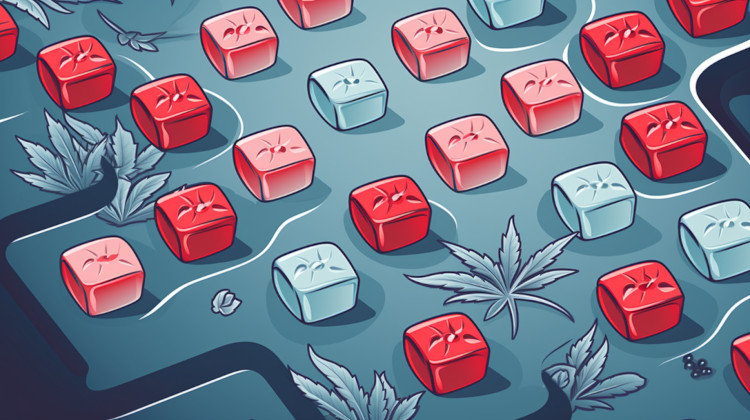
Can I start microdosing immediately? Or should I gradually lower my dose?
If you’re an excessive cannabis user, it may be best if you gradually lower your dose. However, many users can begin microdosing immediately with little to no adverse effects. Discuss with your medical healthcare professional the best course of action for your needs.
Can I microdose CBD?
Yes, you can also microdose CBD. It's also possible that CBD lessens some of the less pleasant effects of THC, making it an excellent option to microdose alongside THC for those looking to avoid them.4
How frequently can I microdose?
It's best to start with a daily routine of taking the microdose at the same time every day. Over time, you may feel comfortable increasing this frequency to multiple times daily. If you're not sure, it's always best to consult with your doctor.
Are microdoses detectable by drug tests?
Yes, trace amounts of THC are often detectable by drug tests, even if you're microdosing.5
Resources
- Johnstad PG. Powerful substances in tiny amounts: An interview study of psychedelic microdosing. Nordic Studies on Alcohol and Drugs. 2018;35(1):39-51. doi:10.1177/1455072517753339
↩︎ - Vaillancourt R, Gallagher S, Cameron JD, Dhalla R. Cannabis use in patients with insomnia and sleep disorders: Retrospective chart review. Can Pharm J (Ott). 2022. 155(3):175-180. doi: 10.1177/17151635221089617.
↩︎ - Almog S, Aharon-Peretz J, Vulfsons S, Ogintz M, Abalia H, Lupo T, Hayon Y, Eisenberg E. The pharmacokinetics, efficacy, and safety of a novel selective-dose cannabis inhaler in patients with chronic pain: A randomized, double-blinded, placebo-controlled trial. Eur J Pain. 2020. 24(8):1505-1516. doi: 10.1002/ejp.1605.
↩︎ - Englund, A., Oliver, D., Chesney, E. et al. Does cannabidiol make cannabis safer? A randomised, double-blind, cross-over trial of cannabis with four different CBD:THC ratios. Neuropsychopharmacol. 2023;48,869–876. https://doi.org/10.1038/s41386-022-01478-z
↩︎ - Spindle TR, Cone EJ, Schlienz NJ, et al. Urinary Excretion Profile of 11-Nor-9-Carboxy-Δ9-Tetrahydrocannabinol (THCCOOH) Following Smoked and Vaporized Cannabis Administration in Infrequent Cannabis Users. Journal of Analytical Toxicol. 2020;44(1):1-14. doi:10.1093/jat/bkz038
↩︎
The information in this article and any included images or charts are for educational purposes only. This information is neither a substitute for, nor does it replace, professional legal advice or medical advice, diagnosis, or treatment. If you have any concerns or questions about laws, regulations, or your health, you should always consult with an attorney, physician or other licensed professional.


